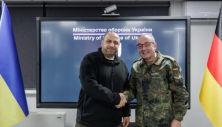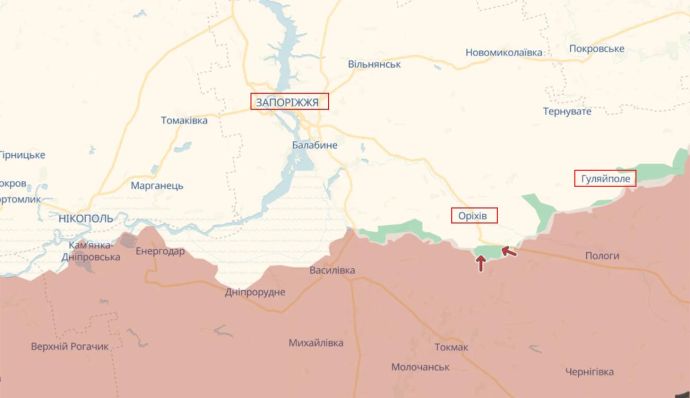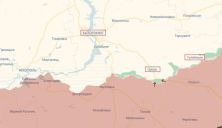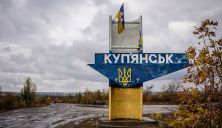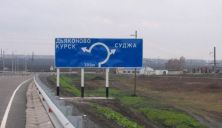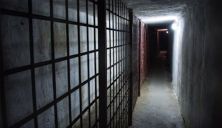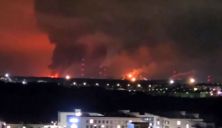In the Zaporizhzhia region, the activation of the Russian army is noted in the Orikhiv direction. Unlike the isolated assaults of the last period, on February 19, Russian troops tried 9 times to break through the Ukrainian defense near Novoandriivka, Maly Shcherbaky, and Stepove, and on February 20 — 5 times in the areas of Novoandriivka and Stepove.
Thus, the occupying army is trying to create the illusion of expanding the theater of military operations — that is, to create a threat of shifting hostilities beyond the Dnipro River.
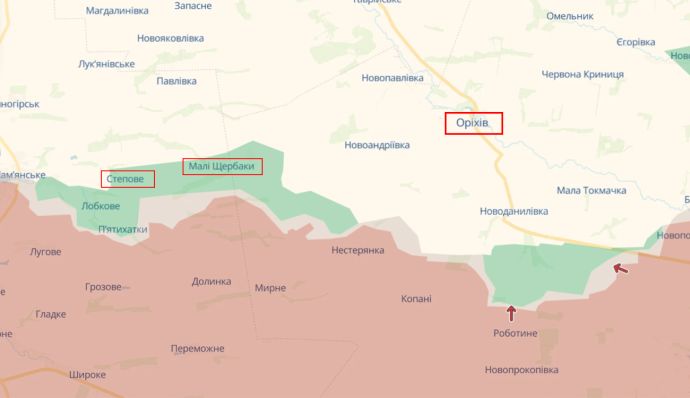
Currently, the grouping of Russian troops in the Zaporizhzhia direction amounts to about 120 thousand. However, according to the Russian side itself, such a number is insufficient for conducting a full-scale operation, let alone capturing the regional center, Zaporizhzhia.
Meanwhile, the Defense Forces of Ukraine have not only stabilized the situation in this section of the front but have also seized the tactical initiative.
The Zaporizhzhia direction plays an important role for the occupiers in launching an offensive, but currently, the enemy has no successes. On the contrary, the Armed Forces of Ukraine (AFU) have stabilized the front line and gained a significant advantage in the use of drones and strike means. This is acknowledged by the occupiers themselves in their public channels.
In particular, the occupiers report that in the area of the village of Kamianske, a rear column of Russian occupiers was hit by Ukrainian HIMARS strikes. And the losses in this single episode amounted to up to 100 personnel, while the occupiers note that sanitary losses, meaning wounded, were only 6-8 people.
Earlier, the Southern Defense Forces also reported that in the Orikhiv and Huliaipole directions, Russian invaders continue to conduct active aerial and other reconnaissance to prepare for new assault actions.
Additionally, the goal of intensifying combat actions in the Zaporizhzhia direction is to divert the operational reserves of the AFU from the Donetsk and Kursk directions. Let me remind you that it was from the Zaporizhzhia direction that the Russians transferred the most combat-ready units of their army — airborne divisions — to the Kursk region.
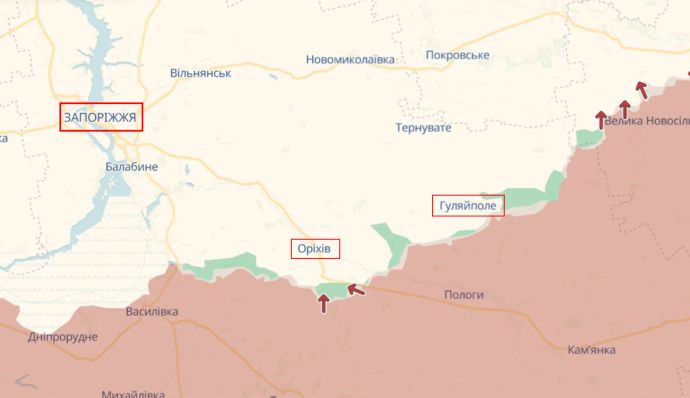
Reports from the General Staff of the AFU, unfortunately, do not come without mentions of missile strikes on settlements in the Zaporizhzhia region. As the grim statistics show, the enemy mostly does this treacherously either during nighttime, when city residents are already asleep, or in the early morning, when they have not yet woken up. At the same time, the aggressor launches ten or more missiles of various types at Zaporizhzhia in one go — from rocket to anti-aircraft missiles.
What do the Russians want to achieve with this, what do they want to show? There are two explanations for this. The first is related to the fact that control over part of the Zaporizhzhia region does not satisfy the Russians, and with their missile attacks, they signal that they claim the entire territory of the region.
Another reason for the intensified shelling of Zaporizhzhia may be the already established practice of the Russians to cause destruction to infrastructure facilities, vital services, and the industrial complex. And, accordingly, through this, the Russians are trying to create a situation of artificial chaos in the territories they do not control.
It is worth noting that simultaneously with these strikes, the enemy is accumulating and relocating its manpower and equipment in the region.
The attempts of the Russians to expand the boundaries of occupation once again prove that Zaporizhzhia holds key significance for them. Firstly, it is a major industrial center that contributes up to 15% of Ukraine’s GDP. Moreover, it hosts a number of strategic industrial enterprises and defense industry facilities. Hypothetically, in combination with control over the Donetsk region with its metallurgical and coal industries and control over the Zaporizhzhia Nuclear Power Plant (ZNPP), this could allow the Russians to create closed industrial production cycles.
It is worth noting that the capture of the Zaporizhzhia NPP was one of the main goals of the so-called “special military operation” of the Russians after their invasion of Ukraine.
Control over the largest nuclear power plant in Europe would allow the Russians to supply, essentially at Ukraine’s expense, electricity to the occupied areas of the Kherson region and the Autonomous Republic of Crimea. According to the Russians, combined with control over the Kakhovka Hydroelectric Power Station, this would solve the issue of both drinking water supply and electricity for the occupied peninsula.
After all, the Russian Federal program of the so-called energy bridge (i.e., the transfer of electricity from Russia to Crimea) turned out to be costly and practically unjustified. There were constant problems with energy supply to the occupied peninsula.
This is precisely why the decree of the Russian dictator Putin on the so-called “nationalization” of the ZNPP appeared. It refers to its re-profiling into a unified energy system of the Russian Federation. The text of the decree states that the Russian authorities must transfer the facilities of the Zaporizhzhia NPP and all its assets into federal ownership, re-register the plant as a Russian unitary enterprise, and place it under supervision from the moment of signing the decree until January 1, 2028.
Today, it is entirely clear that the return of the ZNPP through diplomatic or economic means is practically impossible. Based on the results of IAEA (International Atomic Energy Agency) visits and statements by the head of this organization, it is clear that Russia will not voluntarily give up the station.
In my opinion, to render the very fact of Russian control over the ZNPP meaningless, the Ukrainian side should focus on the power transmission line (PTL) connecting this plant to Crimea. Additionally, the AFU should strike the substation in Dzhankoi, where electricity from the ZNPP is received and redistributed across Crimea. By the way, this has already been done once before.
Therefore, it is not ruled out that if the Defense Forces of Ukraine succeed in this step, the disabling of these two critical objects for the Russians — the PTL and the substation in Dzhankoi — will practically nullify the sense of the occupiers remaining at the ZNPP. Because they will no longer be able to redirect energy flows to Crimea. Sooner or later, they will be forced to leave the ZNPP.
From a military perspective, the further advancement of the occupiers deeper into the territories controlled by the AFU in the Zaporizhzhia region could allow the enemy to expand control over new areas, establish a new front line, and plan further offensives toward the industrial regions of the Dnipropetrovsk region. However, all of this is still in the realm of predictions. The AFU firmly holds its positions and delivers heavy blows to the enemy on the Zaporizhzhia front. Therefore, these forecasts will not come true.
Military-political analyst Dmytro Sniehyriov.
Read also: Moscow Plans to Mobilize “Cons” and Debtors to the Front — Analysis by Dmytro Sniehyriov
